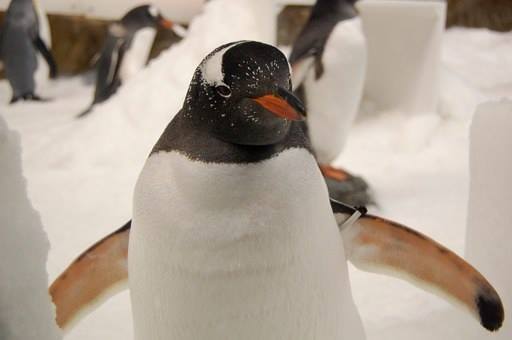
History
No-one is quite sure how they got the name Gentoo but their Latin name is Pygoscelis papua – the brush tailed penguin of papua. Now how did an Antarctic Penguin get a name that involves Papua New Guinea?
Well it seems that Pierre Sonnerat, the biologist on an 18th century expedition to Papua New Guinea included sketches of three Gentoo penguins in his report about the wildlife there.
Unfortunately those drawings appear to have been pinched from his mentor Philibert Commerson who visited Patagonia and the Falklands in the 1760’s where he did actually see these penguins. So Pierre was faking seeing Gentoo penguins in Papua. Fake news has a long history.
An interesting true fact about the Gentoos is that they have a high salt diet. This can cause physiological problems so to counteract this the Gentoos have a salt gland located above their eyes. It produces a highly concentrated saline solution by drawing the salt from their bodies and letting it drip out from the tip of their beaks
Gentoo penguins are the third largest penguin species weighing usually between 5–8 kg and are pretty easy to distinguish from other penguins due to their bright red-orange bill and the white patches behind their eyes.
Gentoo’s breed on many sub-Antarctic islands and on the Antarctic Peninsula but the Falkland Islands, South Georgia, and the Antarctic Peninsula have the largest populations though they are the least abundant of the sub-Antarctic island penguins though their population is considered to be stable.
Breeding
The Gentoo females produce two eggs with incubation lasting just over a month and when they are around 26 days old the young chicks the young chicks start to form créches for mutual protection.
Gentoo’s nests are simple affairs built on beaches or amongst tussock grasses. They are very territorial and vary the location of their colony slightly every year. They occupy their islands generally all year round.
Diet and feeding
Gentoo’s have a varied diet composed of crustaceans (krill) small fish and squid. The adults are in turn food for leopard seals, while the chicks are often eaten by various Antarctic birds such as sheathbills, caracaras (falcons), kelp gulls, and giant-petrels. Feral cats have also been a problem on some of the islands.

